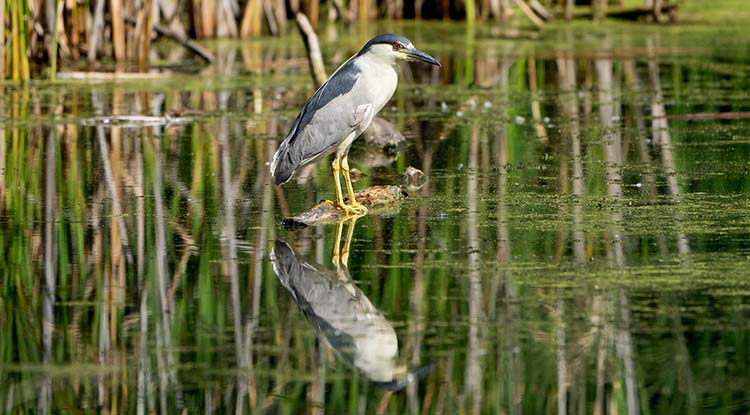Chapter 5: The Good, The Bad, and the Outagamie
The Wisconsin Society of Ornithology’s list of best bird haunts became a crucial resource during my last bird outing. I continued to utilize it as we head into fall migration while adapting and expanding my birding “toolkit.” Halfway through this list, I purchased Sony’s flagship wildlife mirrorless camera, the Sony a1. Will you notice the difference in image quality? Read on to find out!
Outagamie County
In addition to eBird, I log all of my photography sightings on iNaturalist, a citizen scientist site dedicated to the entire natural world. In fact, if you’re an iPhone user you might have access to this tool without even knowing it. Using your iPhone you can take photos of plants and wildlife and ask it to give you its best guess as to what it is. The technology behind it, called Seek, is powered via iNaturalist observations. I bring iNaturalist up because every time you put an observation up on iNaturalist, the iNat community goes through and IDs your photographs. One of Wisconsin’s most avid iNat IDers goes by the username “Raymie” and they just happen to be based out of Outagamie County. So in August, I reached out to Raymie for birding suggestions. They let me know that birding had been relatively lackluster in August, but that Gordon Bubolz Nature Preserve was a decent bet if I was headed that way. So off I went!
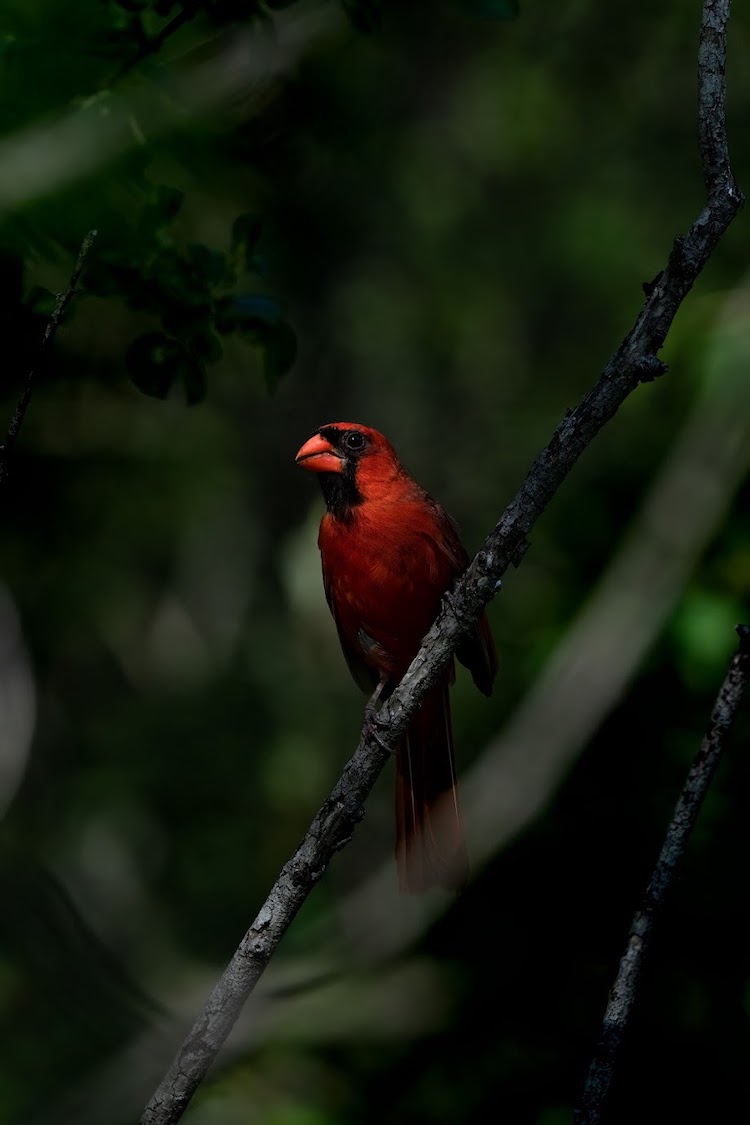
In true Kyle fashion, I arrived in the middle of the afternoon, but hoped the cooling weather might make up for it. My hike started with a ton of American Goldfinches and little else. But if I’ve said it once I’ve said it a cliched amount of times: patience is a virtue when birding. In due time the birds started presenting themselves. A protective House Wren gathered food for its fledglings. A flurry of wrens, Northern Cardinals, and chickadees buzzed in the branches until I saw it….my white whale. And by white whale, I mean blue whale because it was an Indigo Bunting. Now, you might be saying to yourself, “Kyle, I read your articles. You’ve mentioned Indigo Buntings many times before. Heck, I’m a birder myself and I’ve seen plenty of them throughout the state this year. What’s the fuss?” Well, I’ll tell you what the fuss is—I just never seem to find myself in a spot where I can photograph them. Call it what you want, but it’s just been my luck. Maybe I’ve just wanted a shot so badly that they hid from my enthusiasm. Regardless, I finally got a clear shot of one! It’s not an award winner by any stretch of the imagination, but it’s a start. Just look at this bird and its striking blue hues. Magical!
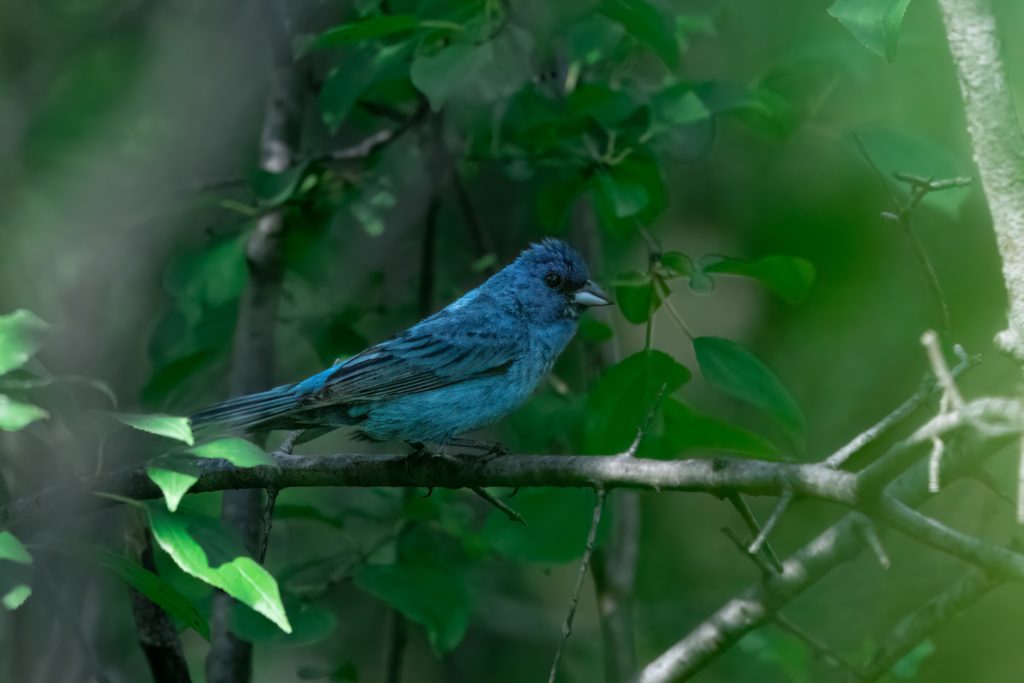
Total Outagamie County Species Observed: 12
Favorite Outagamie County Sighting: Indigo Bunting
Waupaca County
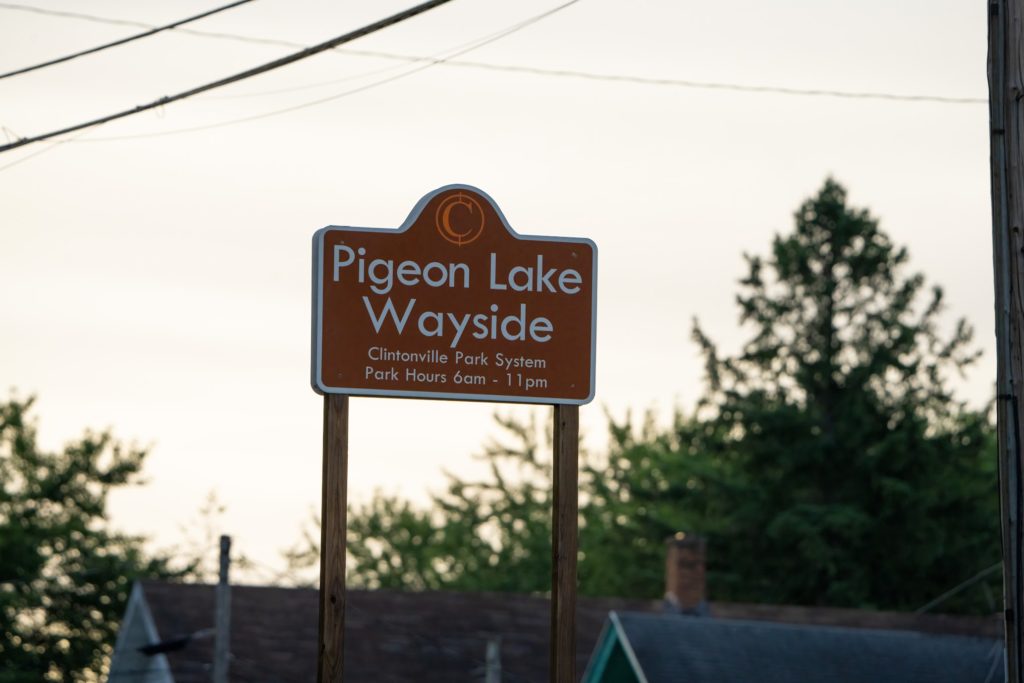
So, I was out in this neck of the woods for a different reason, to shoot a music video for the band The Hungry Williams at an event called the Symco Weekender. Before filming commenced, I headed out to cross Waupaca County off my list. I went with the first place I could find with a nice body of water: Pigeon Lake Wayside Park. It also happens to be a place that had never been eBirded before and I quickly found out why. I pulled out 10 species in half an hour, most of that due to learning bird calls, but the photo opportunities were few and far between. A lone red-winged Blackbird was the only bird near the pond I chose to visit. The only other okay photographic opportunities came from quick flyovers, but again, they were only okay. Back at the house we stayed at, I spent a few minutes birding and added a few extra species, including four Hairy Woodpeckers and a Baltimore Oriole to bring my species count up to 15.
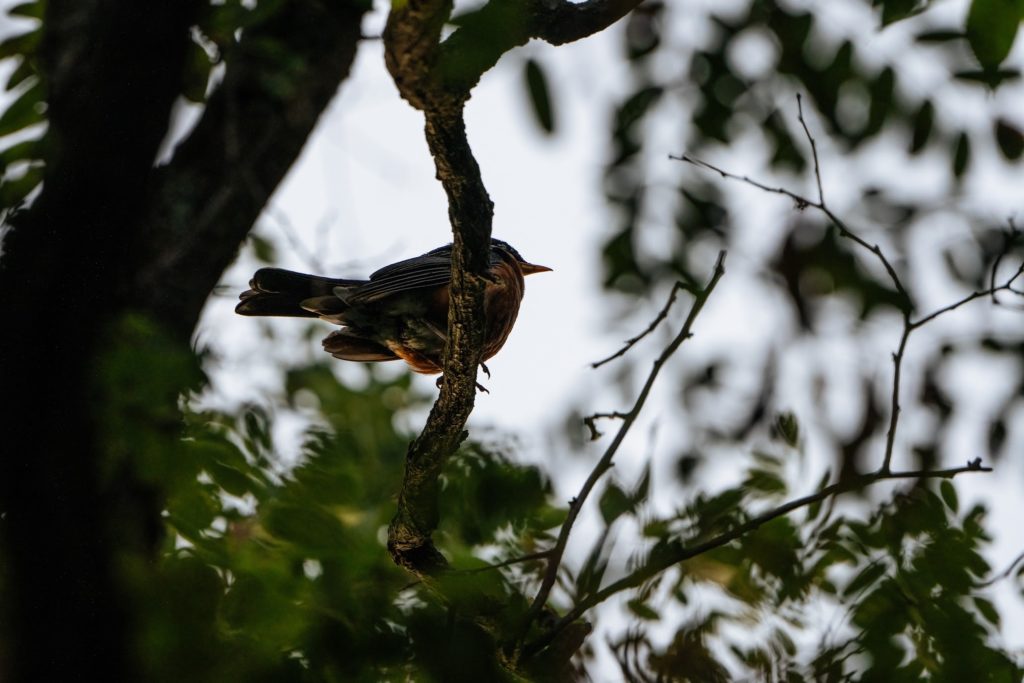
Total Waupaca County Species Observed: 15
Favorite Waupaca County Sighting: Baltimore Oriole
Winnebago County
Off and on rain made for dark conditions, but beggars can’t be choosers when they go into this article with 50 counties to go. That, and I was being a little crafty with these next two counties anyway, so I deserved the mundane weather. I hit Heckrodt Wetland Reserve near Lake Winnebago, which I was super impressed with. Their trail system through the wooded wetland is a series of wide, wooden boardwalks. Very ADA accessible with tons of educational signage pertaining to the current season, which makes me think they might swap it out throughout the year. If they do: A++! It’s a really impressive place.
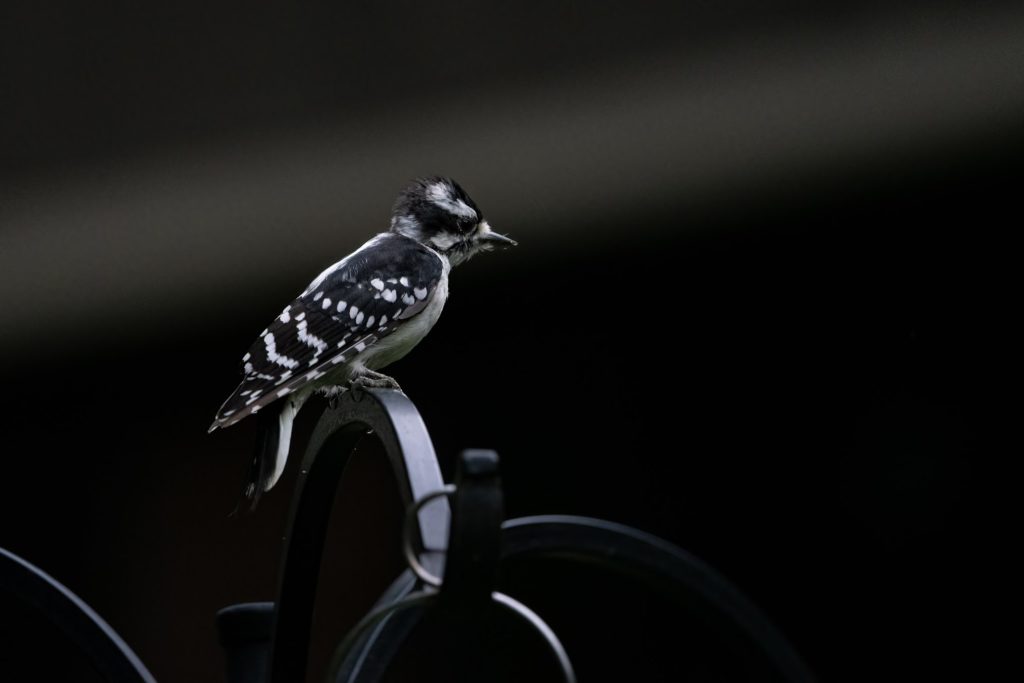
Before diving into the trails, I spotted activity on their bird feeders: finches, Black-capped Chickadees, and Downy Woodpeckers had a feast. The trails were pretty silent, which I think had more to do with the weather than anything else. I snuck a glance at some Grey Catbirds, Northern Cardinals, and a ton of Barn Swallows. While I enjoyed my time with the birds, my highlight was a precious moment I spent with a doe and her two fawns. They came up to two feet away from me, giving me the opportunity for a 20-minute photo sesh before sneaking underneath the boardwalk and heading out into the wetland. Birding has had its ups and downs, but there’s magic to be found in these wild Wisconsin summers.
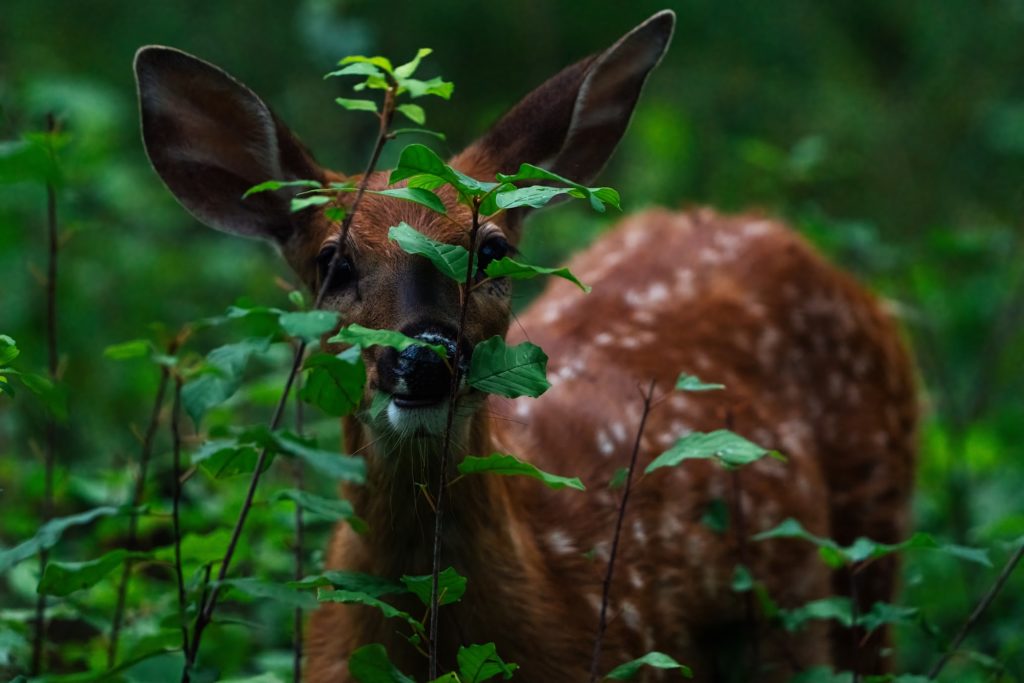
Total Winnebago County Species Observed: 10
Favorite Winnebago County Sighting: White-tailed Deer fawns
Calumet County
Taking on this birding challenge has turned me into one sly cat (which, by the way, keep them in your house. We don’t need sly cats hunting birds!). After Heckrodt I drove SIX MINUTES AWAY to sneak Calumet County in like a bandit in the night. You’d think that would result in bad birding karma or something, but believe it or not, I was given one of the most rewarding birding experiences of my life. When I reached Menasha Conservancy, a Great Blue Heron took off, heading into a swamp. I’ve seen Herons dozens of times, but they’re always fun. Large, pterodactyl-type creature (with a lineage spanning millions of years). It’s always cool, and almost always a highlight for me.
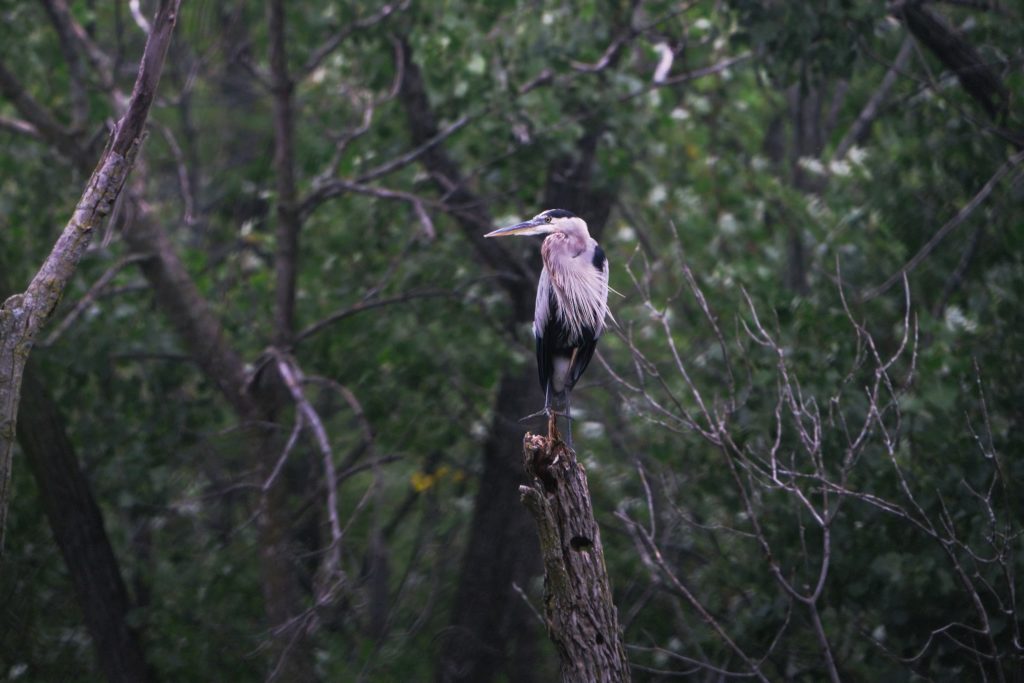
I walked further into the conservancy and came across a classic fork in the road. I was inclined to continue heading north, but some bird chatter convinced me to head east. As I made my way into a clearing, the chatter turned into a symphony of noise, so I turned on Merlin’s bird sound ID function to get the lay of the land. Blue Jay, Northern Flicker, Eastern Kingbird, Gray Catbird, and the list went on. I pulled out my camera and binoculars to confirm the sightings as more and more birds made their presence known, chaotically calling out. I looked back down at Merlin and did a double-take: Osprey. Why is that on this list?! Then silence as a huge shape soared overhead. I couldn’t confirm it but it had my pulse racing with excitement. The shape flew back towards the swamp where I spotted the Great Blue Heron and the chatter calmed down. So I doubled back as a rainy mist settled in.

Back at the swamp, there was no heron to be found, but something massive lurked in the trees…and it wasn’t an Osprey. Instead, a Great Egret stood on top of a tree. I was a bit perplexed but stoked at the opportunity to photograph something different for the column. Egrets are southern birds, but they frequent parts of Wisconsin in the summers, so I wouldn’t consider them rare. Still, I had yet to see one during my 2022 birding adventures, so I was a happy camper. As I took two steps forward to leave, a shadow to the left felt my presence and jetted out from the swamp. The Osprey, prey in tow, took a few laps around the swamp. My jaw fell to the ground but I was too busy picking up my camera to notice. With the poor weather conditions I wasn’t sure if I would get a decent shot, but it didn’t matter. I was seeing my first ever Osprey and having the time of my life. Once again, the other birds in the conservancy cried out. The apex predator of this ecosystem was out on the hunt. After living in the moment for a while, the sky started to darken and I headed to my car. A dozen Red-winged Blackbirds scattered as the piercing screams of a Red-tailed Hawk reigned from above. Looks like this Osprey has competition.
It sounds weird to say, but that evening I understood the full essence of the Osprey in that one-hour-long sighting. What a powerful, mysterious experience. This is why I love being out in nature. I might’ve just found a new favorite bird and I can’t wait to have an experience where I can do the bird justice with my photographs.
Total Calumet County Species Observed: 16
Favorite Calumet County Sighting: the iconic Osprey
Brown County
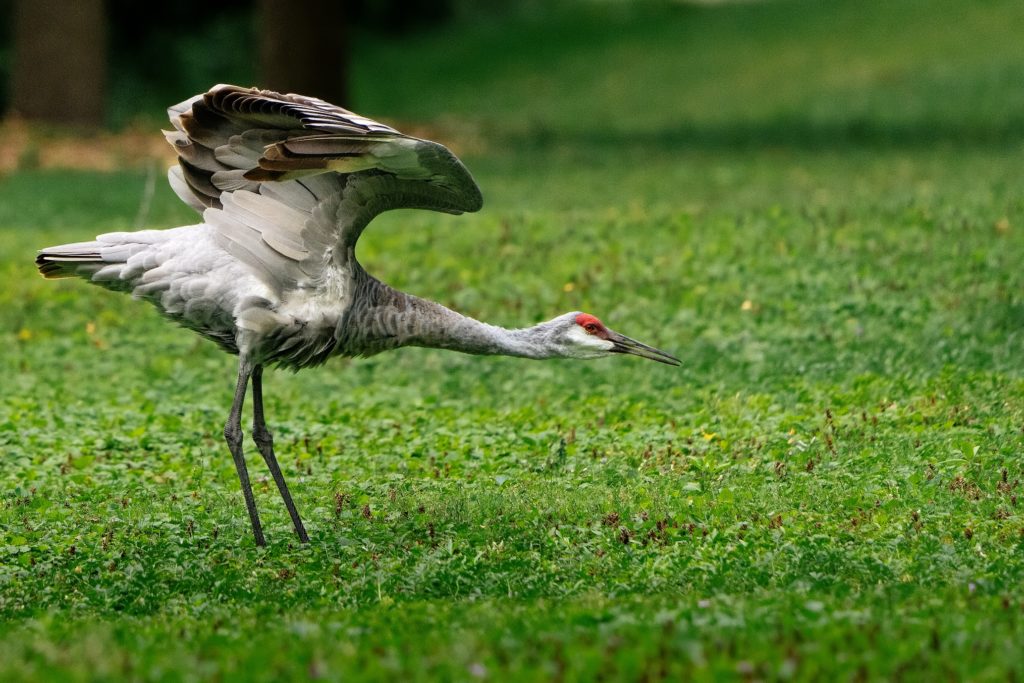
My wife and I jetted up to the land of Lambeau to go birding and catch up with some friends. They recommended the Bay Beach Wildlife Sanctuary, ensuring us that birds would be in abundance. After a nice meal and an even nicer conversation, we headed over to Bay Beach. A pair of Sandhill Cranes greeted us, then made way for the park’s main attraction: massive amounts of three of Wisconsin’s most abundant species. Counting Canada Geese (est. 275), Mallards (est. 424), and House Sparrow (est. 58) made it hard to find the other species, but they made themselves known as we headed further into the sanctuary. Woodpeckers joined White and Red-breasted Nuthatches in pushing House Sparrows off a nearby feeder. A Great Blue Heron took a nap on its perch while a more timid Black-crowned Night Heron did its best to hide from my lens. Enthusiastic children rushed by, flushing the heron out. We passed by migrating Nashville and Yellow-rumped Warblers as we made our way out of the sanctuary.
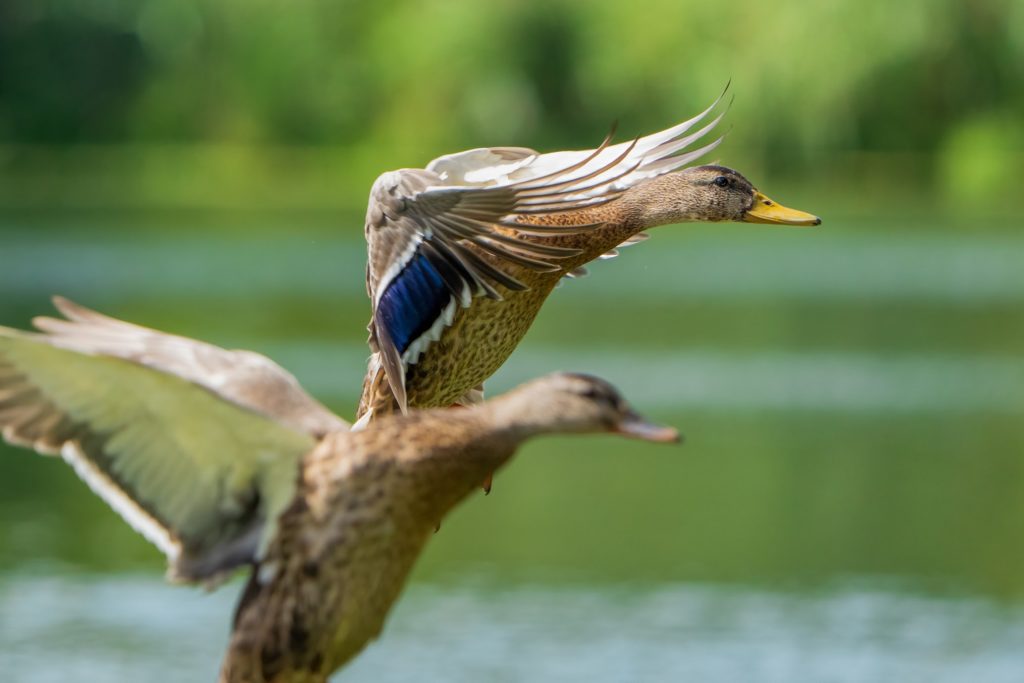
Total Brown County Species Observed: 19
Favorite Brown County Sighting: Red-breasted Nuthatch and Black-crowned Night Heron
Oconto County
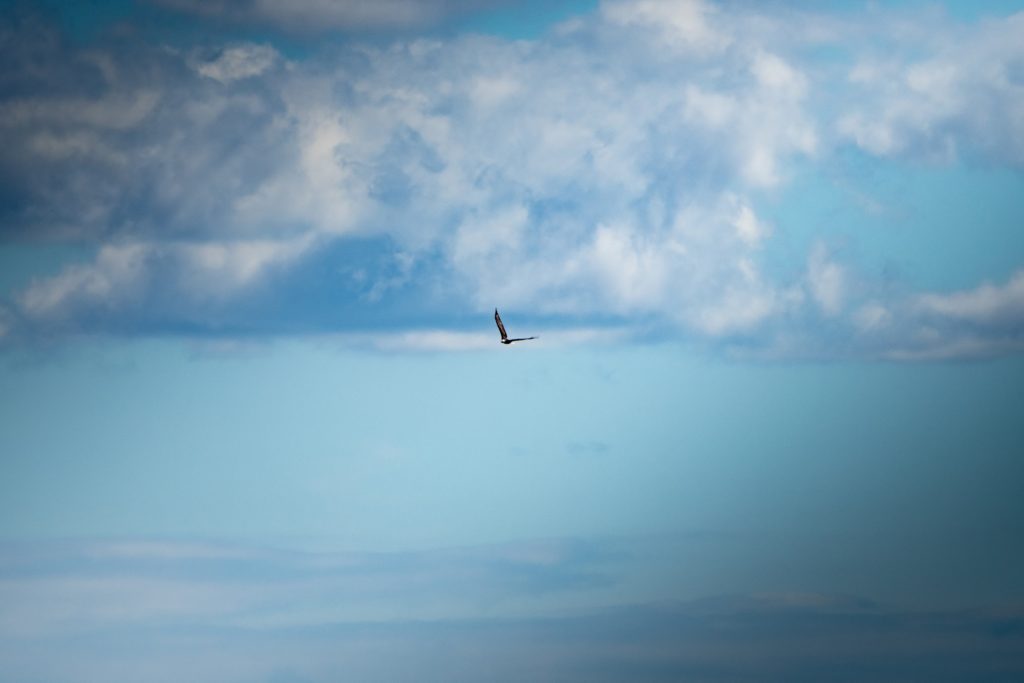
I was a straight shooter with you back in Chapter 3, and as much as I hate to add a dour experience, I’m going to be a straight shooter with you once again. I’ve done a poor job this year of checking out shorebirds and figured I’d see some in Green Bay (the bay, not the city) in Oconto County. Well, not only did we not see any shorebirds, but we also had the worst birding experience of the year so far. I’m not going to go into details, but let’s just say that the people we encountered in Little Suamico are less than helpful to “outsiders” (their word, not mine). My original plan was to hit Green Bay Shores State Wildlife Area, which I know (based on my interactions with “locals/Chicago summer home owners”) would have been good for birding, but that didn’t happen. Instead, we birded at Pensaukee SWA.
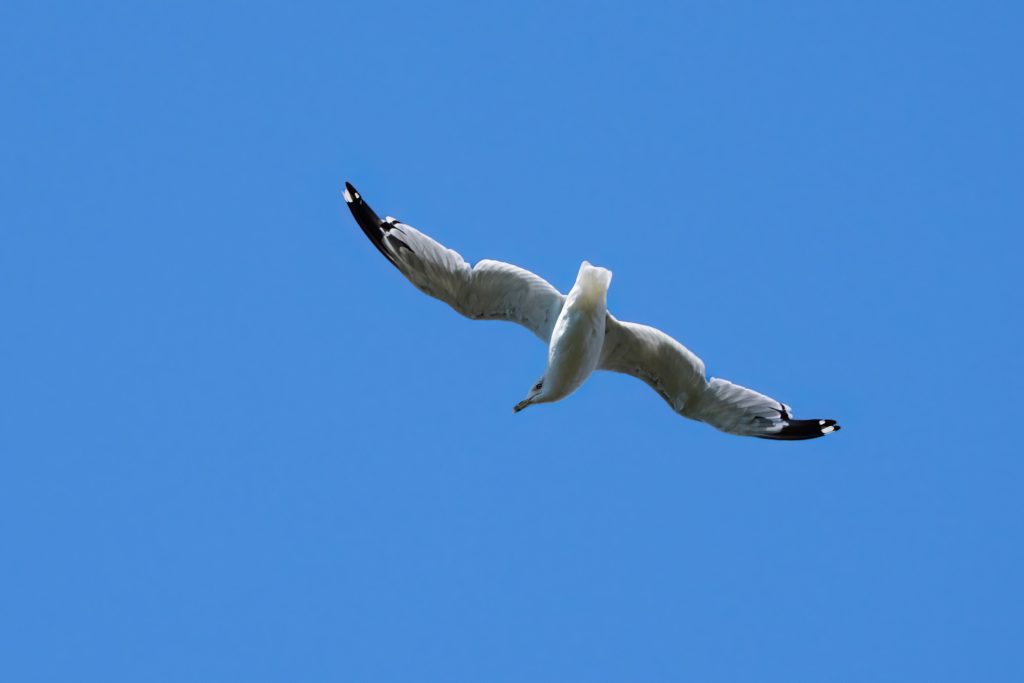
Pensaukee SWA is home to at least one Bald Eagle, which I saw upon arrival. It flew off into the bay pretty quickly and was nowhere to be found after that. Not a single bird dotted the shoreline, so after taking a few shots of a passing Ring-billed Gull, I made my way into the forest area where I was snubbed again. I heard an American Crow and two Black-capped Chickadees, but that was it. It was a very quiet day in Oconto County.
Total Oconto County Species Observed: 4
Favorite Oconto County Sighting: Can’t go wrong with a Bald Eagle sighting, even when it’s fleeting.
Manitowoc County
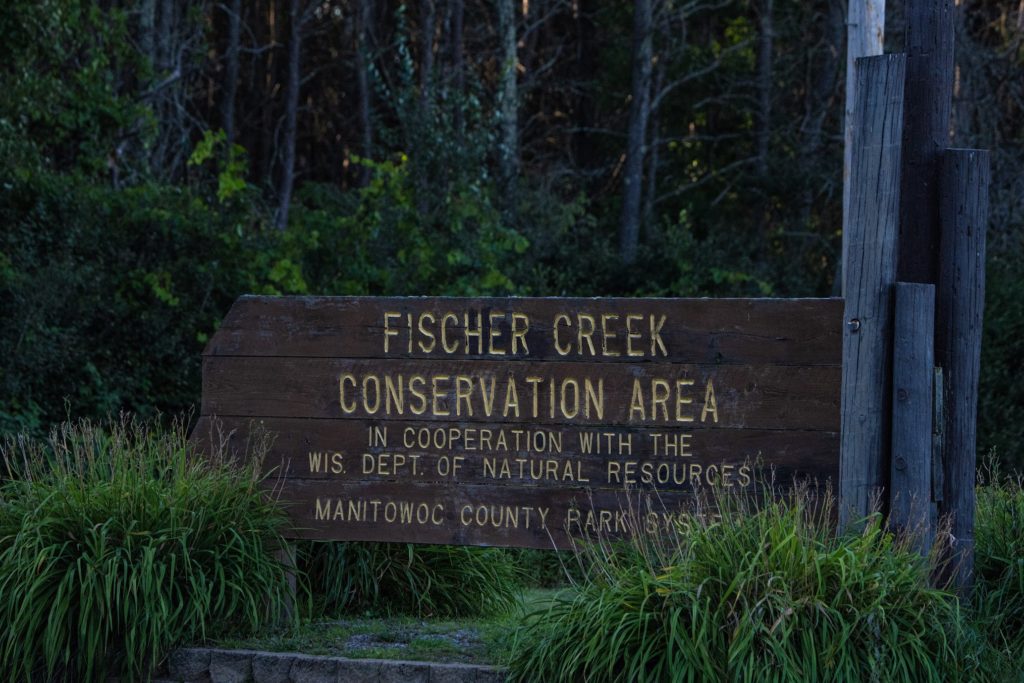
Nothing cures a bad experience like going home, am I right? So my wife and I ended our day at Fischer Creek Conservation Area in the village of Cleveland, my hometown. As a child, I went to Fischer Creek maybe a handful of times. I spent more time at Veteran’s Park than anywhere else outside, but I knew birding would be better at Fischer Creek. That turned out to be mostly true. We only encountered eight species, but it was a fun eight! The setting sun made the creek glow amber and green. A few Mallards and a Belted Kingfisher enjoyed nature’s beauty with us. Later on, 10 Black-capped Chickadees made a chatter and led us to a tree filled with tiny friends. An American Redstart made it further south than the warblers of Brown County. Not to be outdone by Outagamie County, my hometown gave me one more treat: a nice photo session with the Red-eyed Vireo. I’ve seen the Vireo countless times but was just never able to get a decent shot of one until now. So three cheers for the hometown!
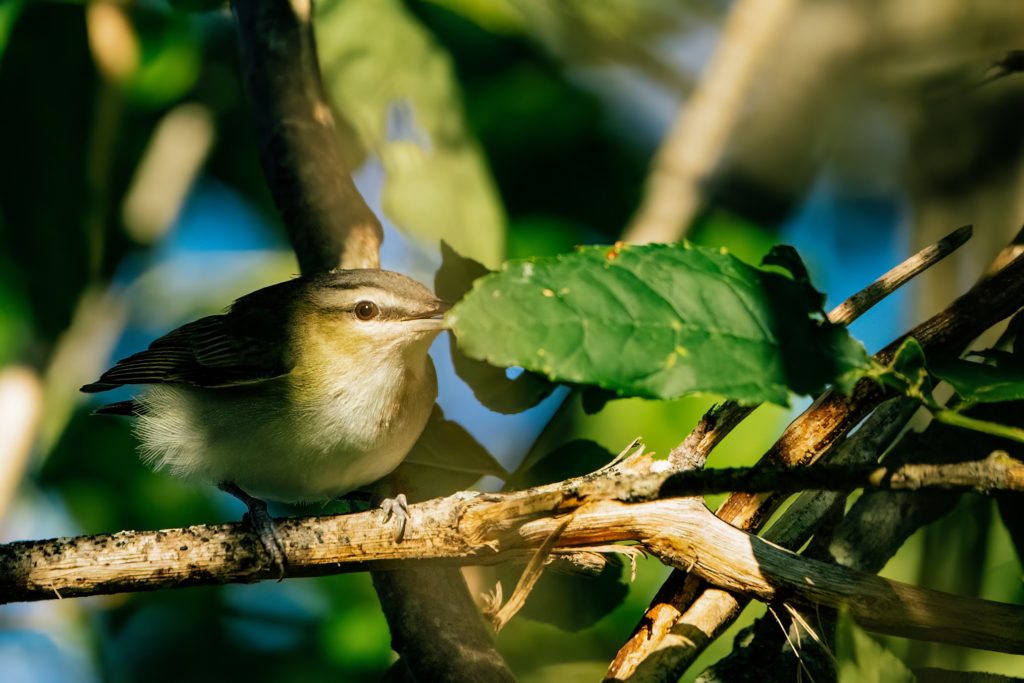
Total Manitowoc County Species Observed: 8
Favorite Manitowoc County Sighting: Red-eyed Vireo
We’re officially in September and I’m almost at 30 counties! I still have over half to go, but I’m currently plotting out a trip that should pump these rookie numbers up. Hopefully life doesn’t get in the way!
2022 County Count: 29
Chances of hitting my goal: I really shot myself in the foot by choosing Empire Strikes Back “odds quotes” to fill this section over the last four columns. I’d say my chances of succeeding the challenge match my chances of someone noticing that it was a reoccurring gag.
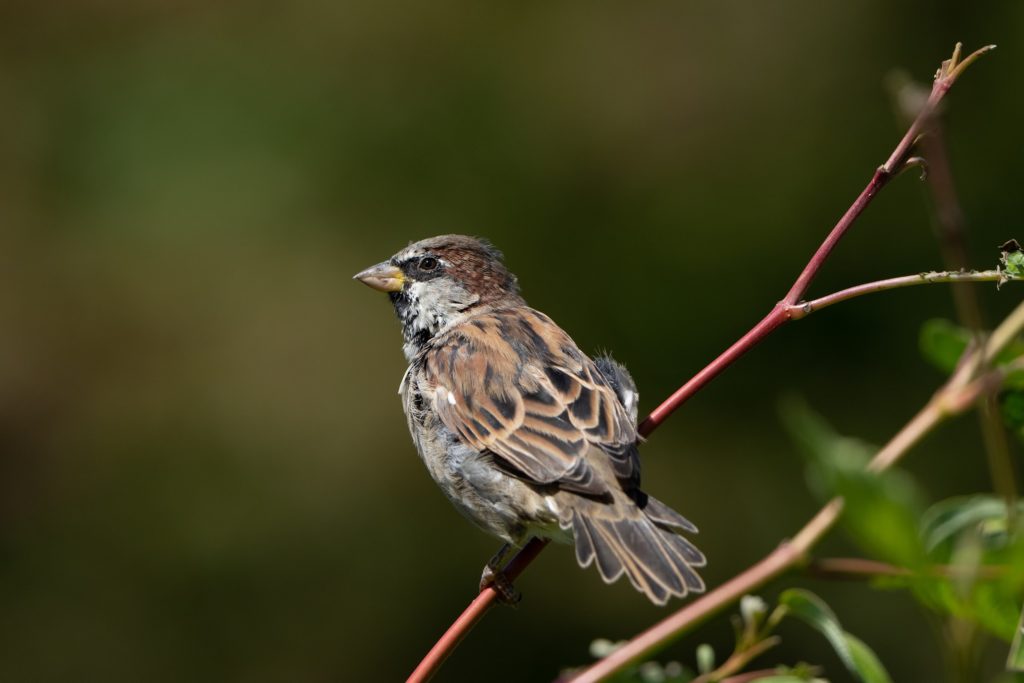
eBirding Tip: Merlin Bird ID is one of the top phone app birding tools at our disposal, but it’s important to understand its strengths and weaknesses before relying on it too much. Merlin is made by the Cornell Lab of Ornithology, the same university behind eBird. You can connect Merlin to your eBird account, allowing you to add Merlin IDs to checklists, help you spot new lifers and more. The home screen gives you four options – Start Bird ID, Photo ID, Sound ID, and Explore Birds. With Start Bird ID you give the app details on a sighting: size, color(s), and where in the environment you saw the bird. The app will then use that information to pair down options to your most likely seen bird. Photo ID will do its best to match a photo you’ve taken to its most likely bird. I take screenshots of my camera’s monitor if I want to know an unfamiliar bird on the fly.
Sound ID, which is perhaps the most exciting-yet-overused tool of the bunch, will record audio of your surroundings and give you sighting information in real time. The final tool, Explore Birds, is the simplest tool. It’s also my favorite. Explore Birds gives a list of common birds found in an area, listing them by bird type and giving you photo reference. It’s great for familiarizing yourself with species you can expect to find when out birding. It’s important to remember that Merlin is a relatively new technology and is not 100% accurate. For instance, Sound ID has some bugs. I don’t record a sighting I only receive through Sound ID unless I can verify it some other way. Start Bird ID comes in handy, but I can’t always match a sighting with their recommended options. Nature will always be more complex than the technological tools at our disposal, but don’t let that stop you from using it. They’re powerful, getting more accurate day by day, and as long as you understand they have limitations they can be a useful guide for your birding adventures.
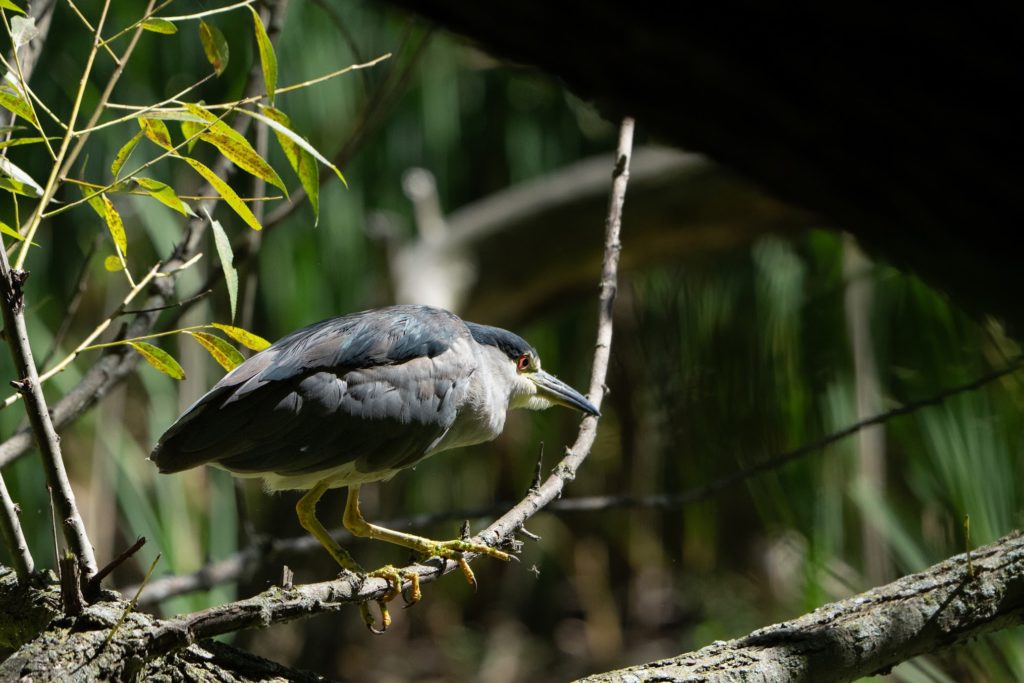
Exclusive articles, podcasts, and more. Support Milwaukee Record on Patreon.
RELATED ARTICLES
• Wisconsin Birding Challenge 2022: Exploring every county in the state (Chapter 1)
• Wisconsin Birding Challenge 2022: Exploring every county in the state (Chapter 2)
• Wisconsin Birding Challenge 2022: Exploring every county in the state (Chapter 3)
• Wisconsin Birding Challenge 2022: Exploring every county in the state (Chapter 4)
• Migrating warblers, others bring a world of color to Milwaukee’s spring landscape

